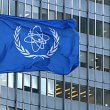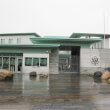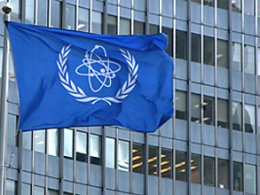By: Micaela Burrow, Daily Caller News Foundation
A State Department team agreed that Bagram Air Force Base in Afghanistan would have served better as a staging ground for a possible country evacuation, but the Biden administration ended up picking the sole other option instead, a witness told Congress Thursday.
If the Biden administration evacuated out of Bagram at the end of the Afghanistan war, the devastating terrorist attack killing 13 U.S. servicemembers and wounding dozens more at Kabul Airport would not have happened, Command Sgt. Maj. Jacob Smith told a House Foreign Affairs Committee panel. Smith, at the time managing U.S. military bases in Afghanistan, argued to the State Department team that Bagram’s defenses made it a better choice for transporting thousands of U.S. Embassy personnel and Afghan allies out as the Taliban closed in on Kabul.
“The events that happened at Abbey Gate — that would not have occurred in Bagram,” Smith, who is still active duty, told Congress in a personal capacity.
Smith acknowledged that conducting a non-combat evacuation operation (NEO) out of Bagram would have required troop reinforcements after the White House had already ordered the withdrawal of conventional units.
Bagram had 84 guard towers; “That takes a significant amount of manpower to man,” he told Republican California Rep. Darrell Issa. “If you had 2,000 people, Bagram would be a much safer location” Smith said.
Smith deployed 14 times in Afghanistan between 2002 and 2021. He served as the senior enlisted leader for Area Support Group — Afghanistan charged with overseeing “all base life support functions” at the nine U.S. bases in the country, including Bagram and Hamid Karzai International Airport (HKIA), from October 2020 to July 2021, according to his written testimony.
As the timeline for the withdrawal consolidated, only Bagram and HKIA remained operational, he stated in the written testimony.
Sometime in the spring of 2021, four planners from the U.S. Embassy in Kabul scoped out Bagram as a possible base for the NEO, Smith said.
A contingency plan dating back to 2012 accounted for between 45,000 and 50,000 people who would need to be flown out, Smith said. But the embassy team told him the true number would fall somewhere between 120,000 and 140,000 people — more than Smith believed HKIA could accommodate.
For one thing, Bagram could house nearly 12 times as many people as HKIA, he argued. HKIA doubled as a civilian airfield, opening up additional weak points in security that threat actors could exploit. It was also closer to the urban center of Kabul, where the most intense fighting was likely to occur.
“The site survey team verbally agreed with me, but I understand that a site survey team does not make the command decision on what bases stay open and what bases close,” Smith said.
“In hindsight, I have looked back and tried to identify any pragmatic rationale for using HKIA over Bagram. The only answer I have identified is the ease of evacuees living in Kabul getting to the airfield,” Smith wrote in his testimony.
As the Taliban advanced throughout the spring and summer, Smith received orders to shut down Bagram by July 4.
“All talks of conducting a NEO were ceased. It is my understanding that those in the embassy believed the Taliban would not advance to and take Kabul,” Smith said.
He exited the country among the last conventional U.S. forces to withdraw, leaving “an area once protected by hundreds of Soldiers and contractors … protected by 113 American soldiers and two companies of partner forces.”
The State Department, White House and National Security Council did not immediately respond to the Daily Caller News Foundation’s requests for comment.
Related Story: ‘Confusing at Best’: Retired Colonel Says No One Was in Charge of Afghanistan Withdrawal










